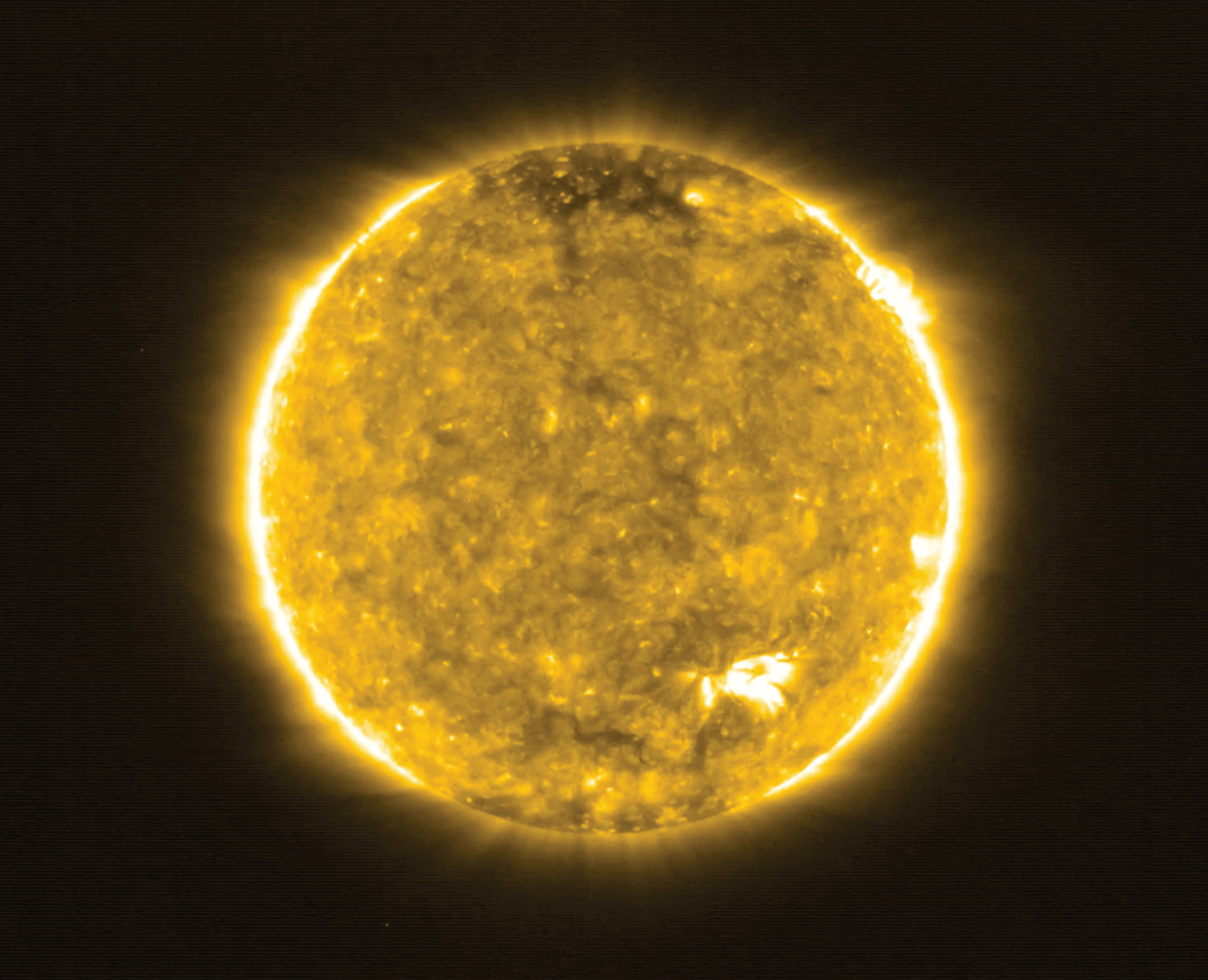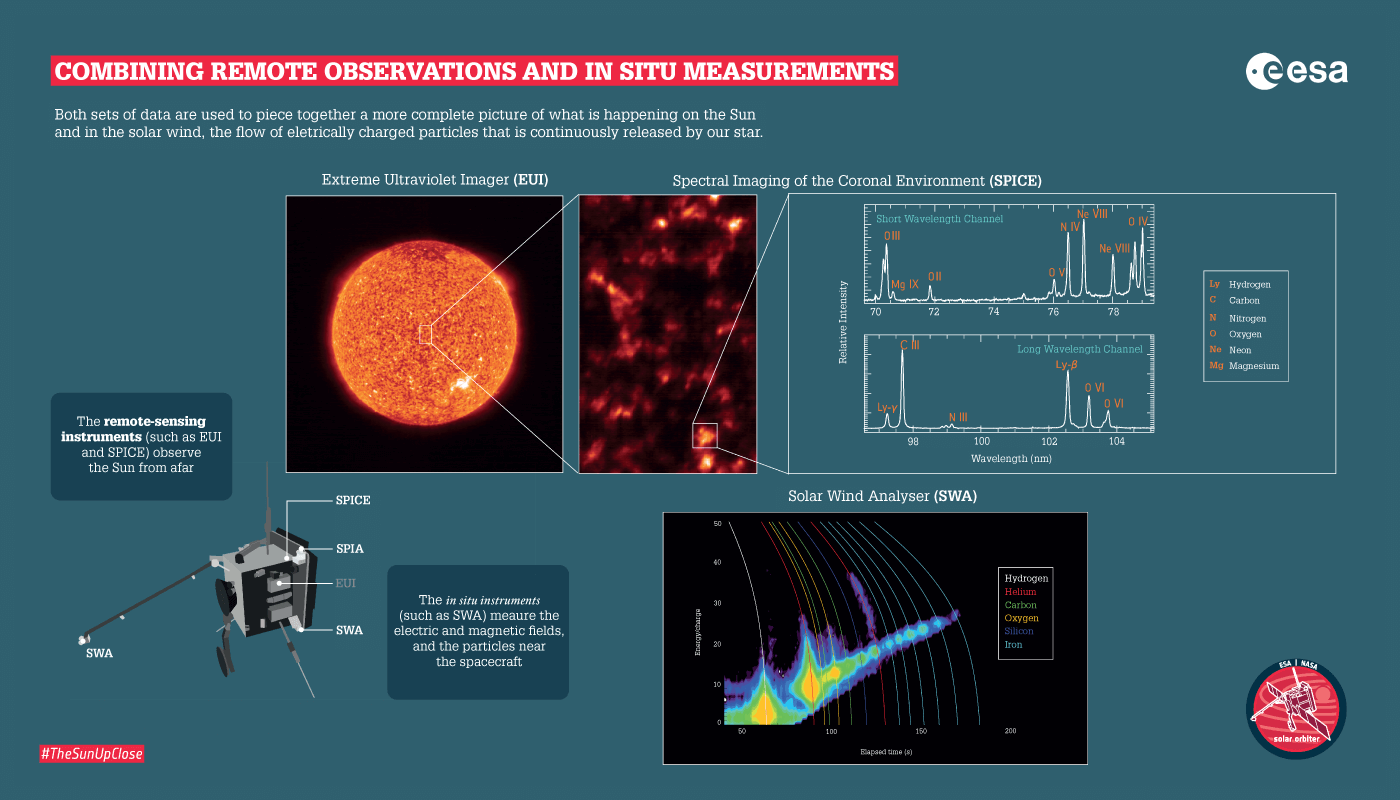
This image, taken by the Extreme Ultraviolet Imager on the ESA’S Solar Orbiter, shows the upper atmosphere of the sun – the corona – in UV. The orbiter carries instruments to sample properties of the sun. For example, the SPICE (Spectral Imaging of the Coronal Environment) instrument rapidly analyzes different ions in the solar wind (temperatures of around 50,000 Kelvin) to allow scientists to monitor rapid changes in the sun’s features.
Below, you can see an in-depth diagram of the remote and in situ instruments used to sample properties of the solar wind around the spacecraft, as well as the first spectrum captured by SPICE. The spectrum shows a range of ions, formed between 10,000 and one million degrees Kelvin, that cover different layers of the solar atmosphere.

The Solar Wind Analyzer (SWA) monitors the sun’s plasma and characterizes properties such as the density, velocity and temperature of its particles. The colored plot shows measurements made by the SWA Heavy Ion Sensor, which determines a particle’s energy-to-charge ratio and its speed. Along with this data, the graph also shows the theoretical curves of expected ions, with the lines colored according to the legend. The patches of color show the relative abundance of particles with each characteristic entering the instrument. The data gathered from the SWA helps researchers better understand the heating mechanism in the sun’s outer atmosphere, and how the solar wind is accelerated into space.
The data from each of the 10 instruments onboard the Solar Orbiter will paint a more detailed picture of the energetic events driving changes in the sun’s atmosphere.
Find the full image gallery from the Solar Orbiter on the ESA’s website here: https://bit.ly/3iB1wVT




